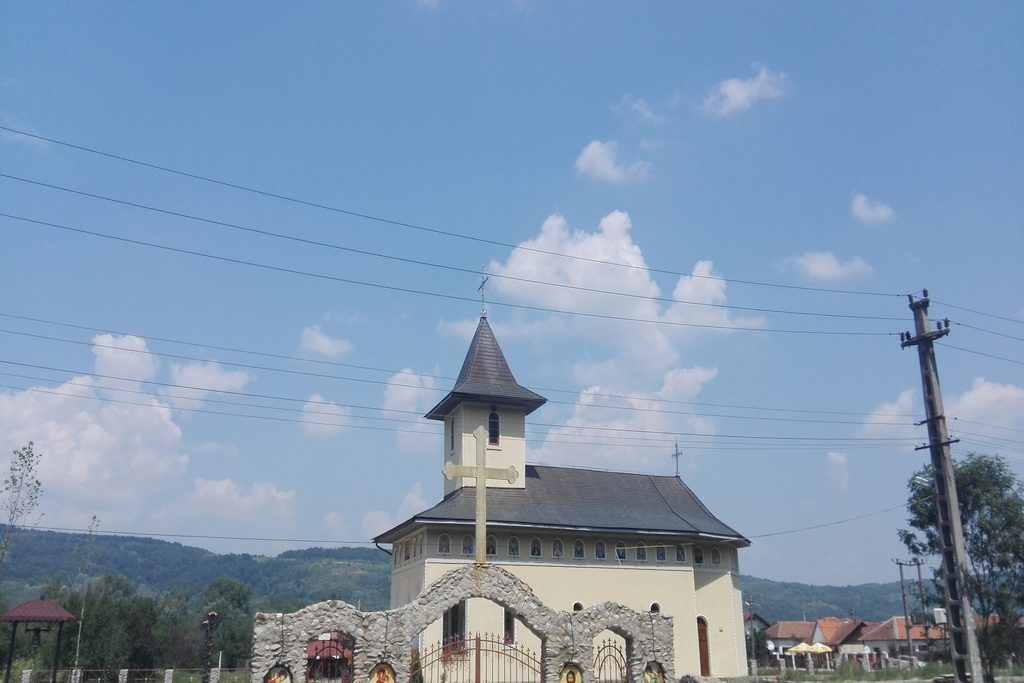

The Brâncovineni Martyrs Church was consecrated on the 24th of June 2012 in the presence of the Metropolitan of Oltenia, His Eminence Irineu, His Grace the Priest Nicodim, the Bishop of Severin and of Strehaia and the Bishop of Deva and of Hunedoara, His Grace the Priest Gurie.
The foundation stone of the place of worship was put by His Grace the Priest Nicodim, Biship of Severin and of Strehaia on the date of the 31st of July 2006.
The construction of the holy church, the interior painting, the arrangement with sculpted furniture, the execution of the exterior finishes, the covering with copper plate, the arrangement of the interior courtyard, the surrounding with stone and metallic frames fence, were executed between the years 2006 – 2010 with the help of the church goers from the village Lunca Banului, of other donors, as well as with the support of the City Hall from Strehaia, of the State Secretariat for Cults and of the God Frâncu Ion, by the efforts and the attentions of the Holy Forty Martyrs Brâncoveni.
The reign of Constantin Brâncoveanu strated under the sign of the appearance of the Bible in Romanian language in the year 1688. He assigned his role as protector of the printing and of the schools from Muntenia, but also from Transylvania. He gave to Bucharest a new Princely Academy, transforming the school from Saint Sava in “public college for locals and foreigners”, with a curriculum resembling to the institutions of superior education. He brought from Istanbul Andrew, the future metropolitan Antim Ivireanul, under whose guidance there will be published numerous books in the languages Romanian, Greek, Slavic, Georgian and even Arabian. He founded more churches and monastery, among which: the churches from Potlogi and Mogoșoaia, the Monasteries Hurezi and Brâncovineni, “Saint Gheorghe the New” Church from Bucharest, where there rest his holy relics.
Because of the fact that he refused to give up the Christian faith, on the 15th of August 1714, on the very day when he was going to turn 60 years of age, the Romanian prince was decapitated. The same punishment was also suffered by his four sons, together with the councilor Ianache.
Their bodies were thrown away in Bosfor. They were taken by a few Christians and buried in great secret in a monastery from Halki, right near Tarigrad. In the summer of the year 1720, Miss Maria (Marica) secretly brought the remains of the prince and buried them in the Saint Gheorghe the New Church from Bucharest. He placed over the tomb a stone embellished only with the country’s tail, without any kind of inscription, and over it he placed a silver candela. Starting among others, and even from the inscription on this candela (from the 12th of June 1720), Virgil Drăghiceanu made in 1914 the discovery of the voivode tomb.
On the 15th of August 1992, Constantin Brâncoveanu together with his sons and with the councilor Ianache were declared saints by the Romanian Orthodox Church.
